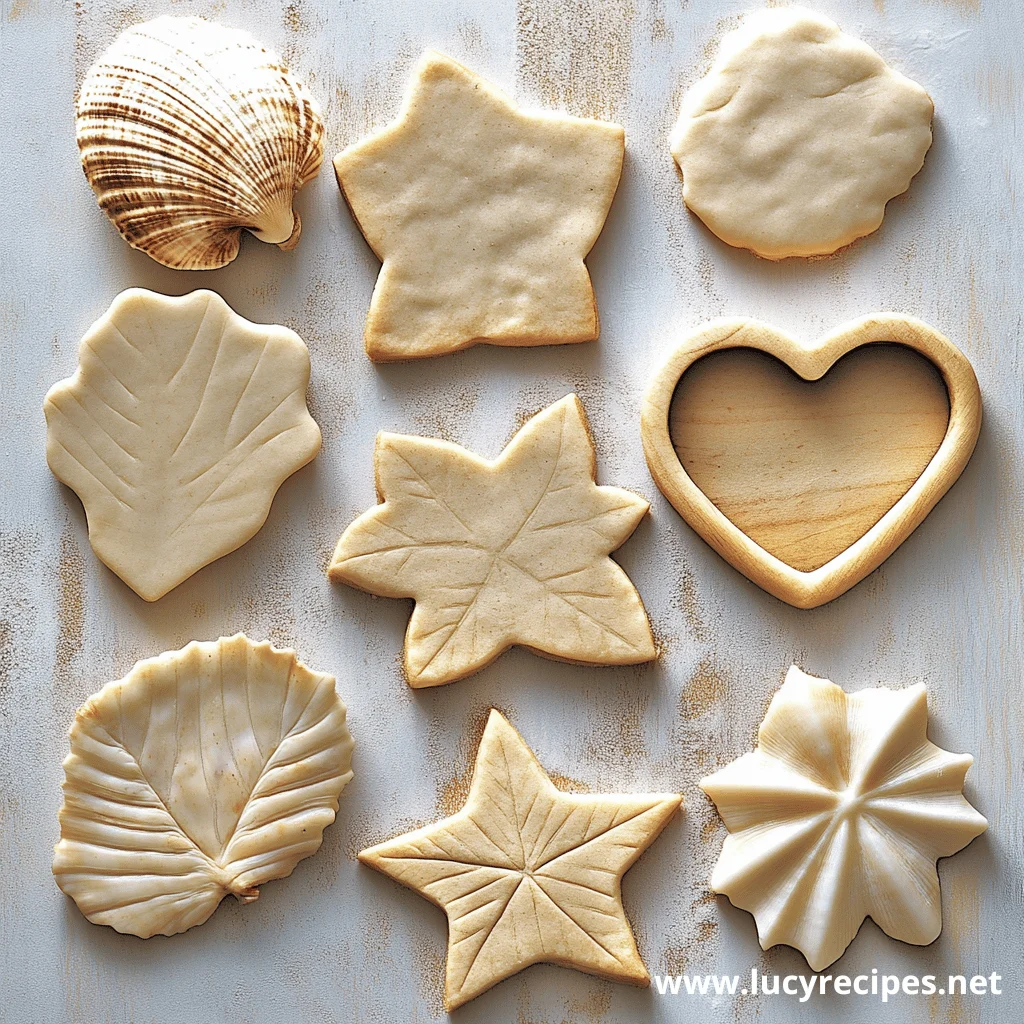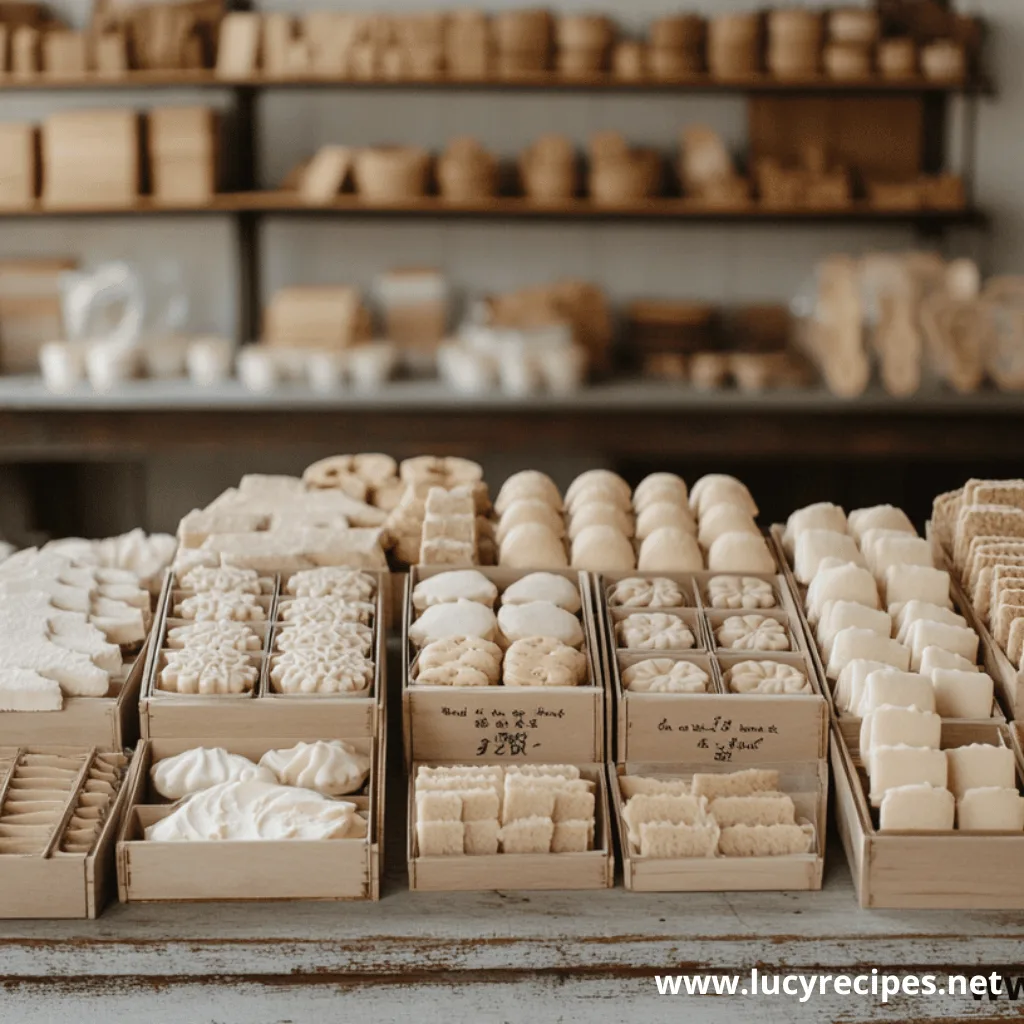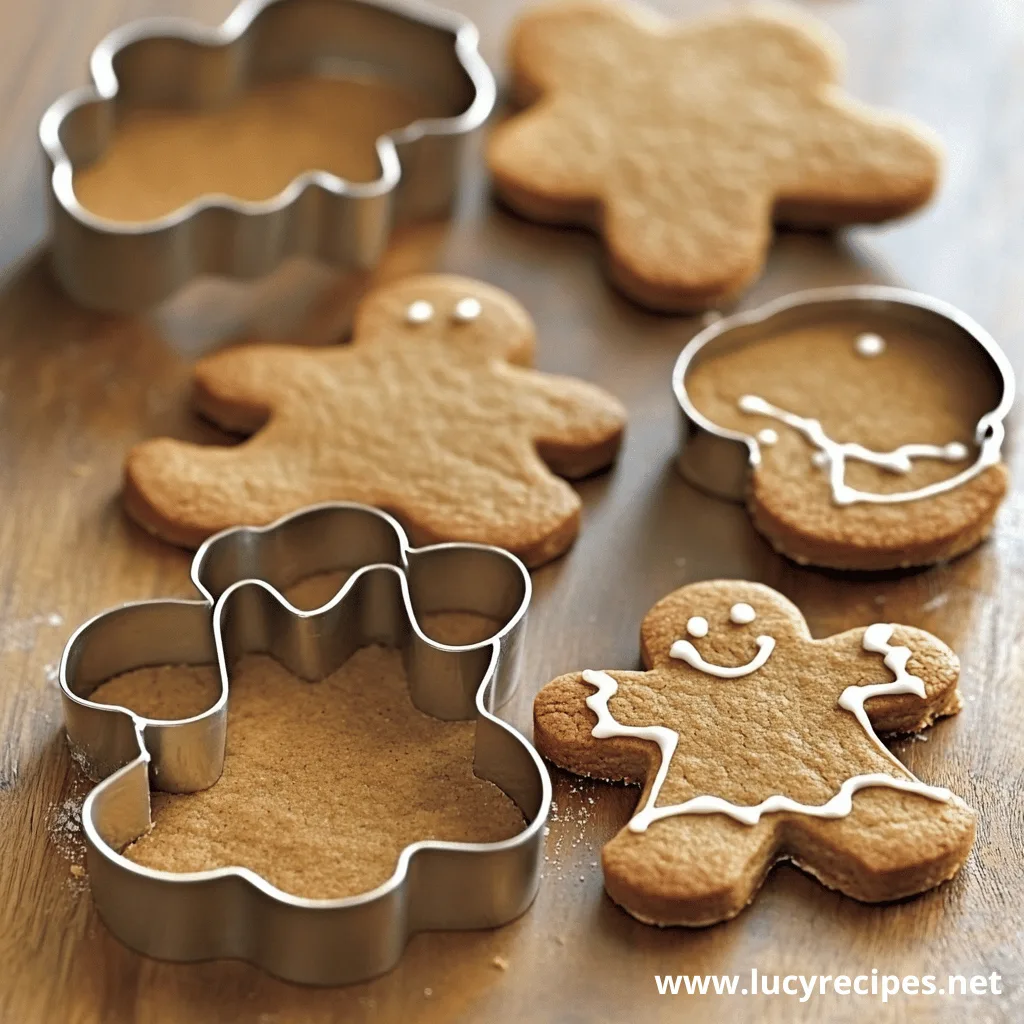Introduction
Making gingerbread cookies is a beloved holiday tradition, but what can you do when you don’t have a traditional cutter? Gingerbread cookie cutter alternatives provide creative and accessible solutions for crafting perfect shapes. Whether you’re in the middle of baking or simply want to try something different, this guide explores innovative options. From household items to technological tools, we’ll cover all the bases to ensure your cookies turn out beautifully.
Table of Contents
Why You Might Need Gingerbread Cookie Cutter Alternatives
There are various reasons why you might need to explore Gingerbread Cookie Cutter Alternatives instead of relying on traditional cutters. Here are a few common scenarios:
- Availability: You don’t have a cutter on hand.
- Customization: You want unique designs not offered by standard cutters.
- Budget-Friendly Options: Avoid spending extra money on tools.
- Eco-Friendly Choices: Reduce reliance on plastic or metal cutters by using sustainable materials.
Understanding the need for Gingerbread Cookie Cutter Alternatives helps you choose the best substitutes, whether you’re improvising in a pinch or looking to elevate your baking creativity.
Everyday Household Items That Double as Cookie Cutters
When exploring gingerbread cookie cutter alternatives, everyday household items often provide the simplest and most accessible solutions. Many common objects can be repurposed into effective cookie cutters, offering a range of creative options.
- Drinking Glasses: Use the rim of a glass for perfectly round cookies. This is especially useful for creating simple circular shapes.
- Jar Lids: The metal or plastic lids of jars can act as sturdy alternatives. They’re great for medium-sized shapes.
- Knife or Pizza Cutter: Manually cut out shapes freehand using these tools. This option works best for those with a steady hand and artistic flair.
- Tinfoil Molds: Shape aluminum foil into your desired gingerbread figure. This DIY option allows for custom shapes and flexibility.
- Cardboard Templates: Draw your design on cardboard, cut it out, and use it as a stencil for precise shapes.
These gingerbread cookie cutter alternatives are not only convenient but also versatile, enabling you to craft unique designs without relying on specialized tools.
Looking for more creative baking inspiration? Check out Butter Biscuits Christmas for festive cookie ideas and tips.
DIY Solutions for Crafting Gingerbread Shapes
If you’re feeling crafty, there are several ways to create your own tools using Gingerbread Cookie Cutter Alternatives. With a little effort, you can craft substitutes that match your exact specifications.
- Metal Strips: Bend thin strips of aluminum or steel into your desired shape and secure them with tape or glue. These homemade cutters can last for multiple uses.
- Plastic Containers: Cut sturdy plastic into your preferred shape. Containers like yogurt or margarine lids work well.
- Wire Hangers: Cut and bend a metal hanger into intricate designs. This option requires careful handling but offers excellent precision.
- 3D Printed Cutters: If you have access to a 3D printer, you can design and print custom cookie cutters. This method requires some technical know-how but delivers professional-quality results.
- Wax Paper Templates: Draw your gingerbread figure on wax paper, cut it out, and use it to trace shapes on the dough.
By using Gingerbread Cookie Cutter Alternatives, you can personalize your gingerbread creations, adding a unique and creative touch to your baking projects.
For more techniques, explore How to Choose and Use Gingerbread Men Cookie Cutters for Perfect Holiday Baking.
Natural Materials for Rustic Cookie Designs

For a more rustic and environmentally friendly approach, natural materials can serve as excellent Gingerbread Cookie Cutter Alternatives. Here are a few creative ideas:
- Leaves: Use clean, non-toxic leaves to imprint patterns onto the dough.
- Wooden Blocks: Sand down small pieces of wood into specific shapes for stamping.
- Shells or Rocks: Smooth stones or shells can create unique patterns when pressed into the dough.
- Twigs: Arrange twigs into simple shapes like stars or hearts, tying them together for stability.
These options are ideal for those who enjoy incorporating natural elements into their baking. Using Gingerbread Cookie Cutter Alternatives not only reduces waste but also adds a beautifully rustic and textured touch to your creations.
Technological Alternatives
Modern technology opens up exciting possibilities for creating Gingerbread Cookie Cutter Alternatives. If you’re open to exploring gadgets, consider these innovative options:
- 3D Printers: As mentioned earlier, a 3D printer allows you to create detailed and customized cookie cutters. Websites like Thingiverse offer free downloadable designs.
- Laser Cutters: For those with access to laser-cutting equipment, you can create precise molds using wood, acrylic, or metal.
- Digital Design Tools: Software like Adobe Illustrator or Canva can help you design templates, which you can print and cut out.
- CNC Machines: If you’re serious about customization, CNC machines can carve intricate designs into metal or wood for durable, reusable cutters.
These advanced Gingerbread Cookie Cutter Alternatives may require some learning and investment but provide unparalleled precision and creativity for your baking projects.
Want to enhance your baking skills further? Learn from The Ultimate Guide to Earl Grey Cookies: Aromatics, Tips, and Gift Ideas.
Tips for Making the Most of Gingerbread Dough
Regardless of whether you’re using traditional tools or Gingerbread Cookie Cutter Alternatives, handling your gingerbread dough effectively is essential for achieving great results. Here are some tips to keep in mind:
- Chill the Dough: Cold dough is easier to work with and holds its shape better.
- Use Parchment Paper: Roll out the dough between two sheets of parchment to prevent sticking.
- Avoid Overworking: Excessive rolling and handling can make the dough tough.
- Even Thickness: Use rolling pin guides to maintain consistent thickness, ensuring even baking.
- Flour Your Tools: Lightly flour your cutting tools or stencils to prevent sticking.
By following these tips, you’ll create perfectly shaped cookies, even when using creative Gingerbread Cookie Cutter Alternatives.
For delicious dough recipes, try the Pumpkin Banana Loaf recipe for seasonal flavor inspiration.
Creative Uses for Leftover Dough Scraps

Don’t let leftover dough scraps go to waste! There are plenty of ways to repurpose them into delightful treats:
- Mini Cookies: Roll scraps into small balls and bake them as bite-sized treats.
- Crust Decorations: Use scraps to decorate pie crusts or pastries.
- Edible Decorations: Shape scraps into small stars, hearts, or letters for cake and cupcake toppers.
- Crumbled Toppings: Bake and crumble the scraps to use as ice cream or yogurt toppings.
- Cookie Bars: Press the scraps into a baking pan to create layered cookie bars.
These ideas ensure you get the most out of your dough, minimizing waste and maximizing creativity.
Exploring Non-Edible Alternatives for Practice Shapes
If you’re practicing designs or working with kids, consider non-edible materials to perfect your gingerbread cookie cutter alternatives. Here are a few examples:
- Playdough: Shape playdough to test your designs before working with real dough.
- Foam or Felt: Cut these materials into templates for easy tracing.
- Cardboard Models: Build cardboard mock-ups to experiment with complex shapes.
- Clay: Use modeling clay to practice intricate designs that you can replicate with dough later.
- Reusable Molds: Silicone molds for crafting can be adapted for practice.
Using these materials lets you refine your techniques without wasting ingredients, making them ideal for beginners or experimental bakers.
How to Clean and Maintain DIY Cookie Tools
Using DIY tools for gingerbread cookies can be both fun and resourceful, but proper maintenance is crucial to ensure they last. Knowing how to clean and maintain your tools will save time and money.
Cleaning Tips
- Wash Immediately After Use: Clean tools promptly to prevent dough and icing from hardening.
- Use Mild Detergents: Avoid harsh chemicals, especially if tools are made from natural or porous materials.
- Warm Water Soak: For stubborn residues, soak tools in warm water for 10-15 minutes.
- Brush Gently: Use a soft-bristled brush for intricate DIY cutters made of foil or wire.
Maintenance Guidelines
- Inspect for Wear: Check for rust, cracks, or sharp edges that could damage dough.
- Proper Storage: Store in a dry place to prevent moisture damage.
- Reinforce Weak Points: For homemade cutters, reapply tape or adhesives if they become loose.
By maintaining your tools, you ensure hygiene and durability for all your baking adventures.
Historical Alternatives to Modern Cookie Cutters
Before cookie cutters became widely available, bakers relied on traditional and inventive methods. Examining what can you use instead of a gingerbread cookie cutter historically reveals fascinating practices.
Early Tools and Techniques
- Hand Cutting: In medieval Europe, bakers shaped dough using knives to create intricate designs.
- Wooden Molds: Artisans carved detailed patterns into wooden blocks, which bakers pressed into the dough.
- Clay Stamps: Ancient cultures, like the Greeks and Romans, used ceramic stamps to imprint dough with decorative motifs.
Material Evolution
- Tin and Brass Cutters: By the 18th century, metalworking techniques enabled the creation of more durable and reusable cutters.
- Repurposed Items: Everyday items like drinking glasses or small bowls were commonly used to create simple shapes.
Learning about these historical methods inspires modern bakers to think creatively about gingerbread shaping.
Cultural Variations in Gingerbread Shaping Techniques
Different cultures around the world have unique approaches to shaping and decorating gingerbread. Exploring these variations provides inspiration for what can you use instead of a gingerbread cookie cutter.
European Traditions
- Germany: Lebkuchen, a traditional German gingerbread, often features round or heart-shaped designs, historically cut by hand.
- Sweden: Pepparkakor, thin and crispy gingerbread cookies, are commonly cut into stars, pigs, and other festive shapes.
Asian Influences
- Japan: Ginger-flavored biscuits may be shaped using wooden molds or pressed with intricate stamps, reflecting Japanese minimalism.
American Adaptations
- Modern Innovation: In the U.S., bakers often use playful and unique shapes, incorporating seasonal themes beyond traditional figures.
Understanding these cultural techniques broadens your gingerbread-shaping repertoire.
Safety Considerations When Using Improvised Tools
When crafting gingerbread shapes with improvised tools, safety should always come first. Improper handling can lead to accidents or contamination.
Material Safety
- Avoid Toxic Materials: Ensure DIY tools are made from food-safe materials like aluminum foil, clean plastic, or untreated wood.
- Inspect for Sharp Edges: Blunt or sand down any sharp edges that could harm hands or tear dough.
Proper Handling
- Stabilize Tools: Secure tools firmly to avoid slipping while cutting.
- Supervise Children: If children are helping, guide them closely, especially when using knives or fragile molds.
Cleaning Practices
- Sanitize Before Use: Always clean tools thoroughly to prevent cross-contamination.
- Avoid Cross-Use: Do not reuse materials like cardboard or wire for non-food purposes after baking.
Prioritizing safety ensures a smooth and enjoyable baking experience.
Decorating Tips for Irregular Cookie Shapes
Irregularly shaped cookies can still look stunning with the right decorating techniques. When using alternatives to traditional cutters, embrace the uniqueness of each piece.
Basic Decorating Ideas
- Piping Borders: Outline shapes with royal icing to define edges and hide imperfections.
- Use Stencils: Place a stencil over the cookie and dust with powdered sugar or cocoa for a clean design.
Highlighting Creativity
- Layered Designs: Add small decorations like edible pearls or candy to create depth.
- Texture Play: Use a fork, toothpick, or stamp to add interesting patterns before baking.
By focusing on decoration, even irregular cookies can become a visual delight.
How to Store Homemade Cookie Stencils and Molds

Proper storage of homemade tools ensures they remain functional and ready for future use. Whether your tools are DIY or improvised, keeping them organized is essential.
Short-Term Storage
- Airtight Containers: Store small molds and stencils in resealable containers to prevent dust and damage.
- Zip Bags: Use labeled zip-top bags to separate different shapes and materials.
Long-Term Solutions
- Hang Stencils: Punch a hole in cardboard stencils and hang them on hooks for easy access.
- Stack Strategically: Place larger molds at the bottom and smaller ones on top to save space.
- Avoid Humidity: Store in a cool, dry place to prevent warping or mold growth.
With these methods, your tools will stay in excellent condition for years to come.
Scaling Up: Mass-Producing Gingerbread Without Cookie Cutters
If you’re baking gingerbread on a large scale, traditional methods may not be feasible. Understanding what can you use instead of a gingerbread cookie cutter in mass production is key.
Efficient Techniques
- Roll-and-Cut Systems: Use rolling pins with embossed patterns to cover large batches quickly.
- Sheet Pans: Bake large sheets of gingerbread dough, then slice into squares or rectangles after baking.
- Custom Templates: Create oversized stencils for consistency in shape and size.
Commercial Equipment
- Die Cutters: Invest in semi-automated die-cutting tools for uniform shapes.
- Laser Cut Molds: These provide precision and speed for high-volume baking.
Scaling up requires thoughtful planning but ensures efficiency without compromising quality.
FAQs
What can you use instead of a gingerbread cookie cutter?
You can use household items like drinking glasses, jar lids, or knives. For more intricate shapes, consider DIY tools such as tinfoil molds, cardboard templates, or 3D-printed cutters.
Are DIY cookie tools safe?
Yes, as long as they’re made from food-safe materials and cleaned thoroughly before use.
How can I create complex shapes without a cutter?
Use stencils, freehand carving with a knife, or emboss patterns with everyday objects like forks or stamps.
Conclusion
Exploring gingerbread cookie cutter alternatives allows you to unleash creativity and resourcefulness in your baking. From household items to historical methods and cultural techniques, there are countless ways to craft beautiful cookies. By prioritizing safety, proper maintenance, and innovative decorating, you can transform your baking experience. Whether you’re experimenting for fun or preparing for a large event, embracing the process and enjoying the delicious results is the ultimate goal.


1 thought on “Creative Alternatives to Gingerbread Cookie Cutters: A Comprehensive Guide”
Comments are closed.